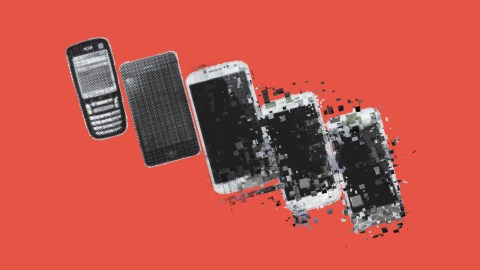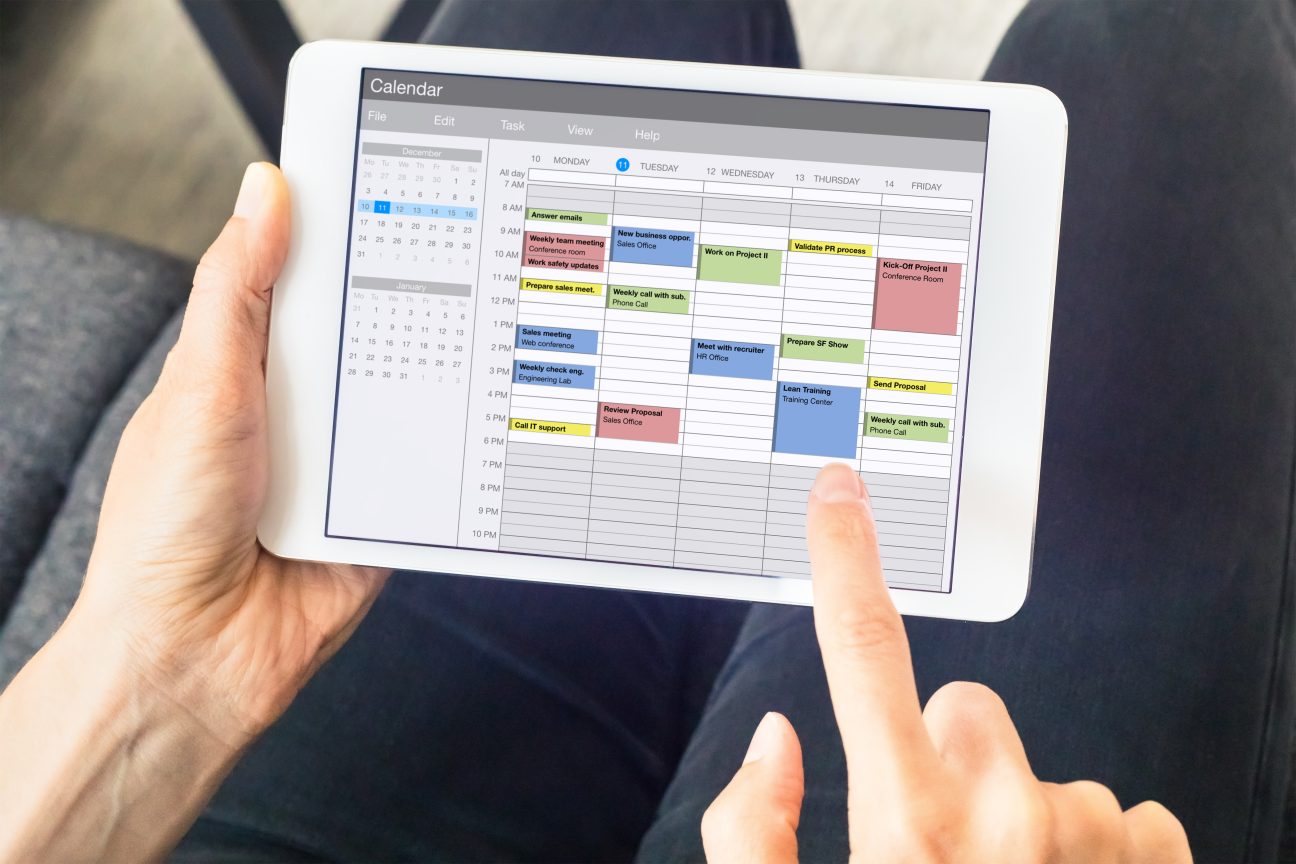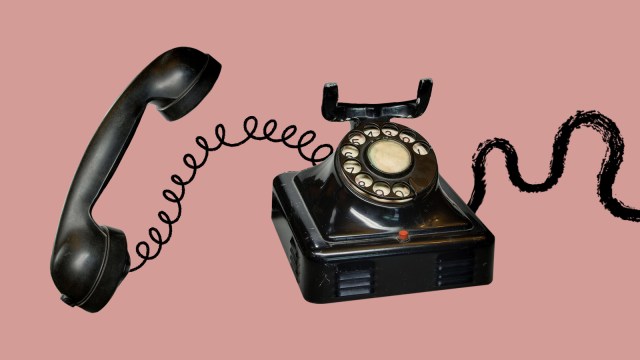Master your digital distractions (without a digital detox)

- Digital distractions have become a ubiquitous part of work and life.
- According to Nir Eyal, author of Indistractable, such distractions begin with emotional discomfort.
- You must reassess your internal and external triggers to bring them in line with your daily intentions.
“You’ve got mail.” Even in the internet’s early days, AOL’s friendly chime could easily distract with the promise of email and emoticon-stuffed ads. Since then, digital distractions have propagated to be as boundless and instantaneous as the internet itself.
Social media informs you whenever someone has liked or commented on your posts. Amazon wants you to know your package is on its way. News apps keep you up-to-date on all the latest happenings. Slack can deliver a colleague’s questions day or night. Netflix wants to know if you’re interested in its new show, TikTok if you might like Zach King’s latest illusion, Spotify if you’re down for a personalized playlist. And, of course, you’ve still got mail.
Yes, you can turn these notifications off, yet the psychological pull remains. You want to know if your friends liked your vacation photos or if your socks will be delivered on time. So you check, and your attention is pulled away from wherever you intended it to be.
A common prescription for this online overload is a digital detox. But according to Nir Eyal, author of Indistractable, unplugging doesn’t help us master our digital distractions. It instead suggests we lack the willpower to control onslaught while simultaneously reminding us that offline life bustles with distractions, too.
“The price of living in a world with so many good things in it is that sometimes we have to learn these new skills, these new behaviors to moderate our use,” Eyal told Freethink. “One surefire way to not do anything is to believe you are powerless.”
To better handle digital distractions while staying plugged into your life, Eyal says you need to learn these four skills.
Reimagine your internal triggers
According to Eyal, distraction is a psychological response to emotional discomfort. When we’re feeling anxious, bored, unhappy, or another disquieting sentiment, we are internally triggered to seek relief.
For example, people suffering from imposter syndrome doubt their abilities to the point of believing themselves frauds. This insecurity often manifests as one of two distracting habits: over-preparation or procrastination. Faced with a challenging project, they’ll either engage in a ritual of ceaseless preparation or avoid it altogether. And many online services are custom-made to offer this escapism.
“When we are looking at our devices or checking email, fundamentally, what we need to understand is this core truth: Distraction starts from within, and time management is pain management,” Eyal said in an interview.
Mastering these internal triggers is the first step in overcoming digital distractions. Eyal’s technique is to reimagine either the trigger, the task, or your temperament. Someone with imposter syndrome might:
- Reimagine the trigger by viewing the project as an exploration rather than a test of skill.
- Reimagine the task by trying to find the fun in it.
- Reimagine their temperament by shifting from a self-limiting mindset to one of growth.
This technique recasts the project into one of psychological safety, helping you to maintain your focus on it longer.

Make time for traction
The activities that make up most digital distractions — email, shopping, videos, social media, and so on — aren’t inherently harmful. Whether they can even be considered distractions, Eyal notes, amounts to intention.
“Anything we plan to do with our time is traction. Anything that is not what we plan to do is a distraction. And it’s impossible to know the difference between traction and distraction if you can’t look at some sort of plan for your day,” Eyal said.
To keep track of your intentions, schedule your day with a timeboxed calendar. Break up your day into “timeboxes,” each dedicated to a specific task. During each timebox, you focus on that task exclusively.
For example, if your email timebox is from 8 to 8:45 a.m., then checking your email isn’t a distraction. It’s traction.

Perform a trigger audit
External triggers — “the pings, dings, and rings” that “prompt us to either traction or distraction — can also work toward your intentions. If a phone notification signals an upcoming timebox, then it’s a valuable tool. However, these triggers have multiplied to such a degree that separating traction from distraction is a thorny task.
To weed out external distractions, Eyal recommends performing a trigger audit on your digital environments:
- Remove any apps that aren’t helpful.
- Relocate apps where they are most useful. For example, if you find social media distracting when out with your family, remove it from your phone and only log in on your laptop.
- Reorganize your most productive apps to be easily accessed on your desktop or home screen.
- Reclaim your time. Turn off notifications you don’t need. Adjust the ones you do. Learn to use the “Do Not Disturb” function on your phone and computer effectively.
“Fixing the external triggers and hacking back on your phone and your computer, that’s easy. That’s kindergarten stuff. However, those are only [two environments] that we operate under where these external triggers can lead us towards distraction,” Eyal said.
In other words, you should audit your physical environments, too. Remove distractions from your desk through periodic cleanings, reorganize daily tools to be accessible, and reclaim your space with physical barriers. Even a literal “Do Not Disturb” sign is worth a try.
“The price of living in a world with so many good things in it is that sometimes we have to learn these new skills.”
– Nir Eyal
Prevent digital distractions with pacts
Many digital distractions are entwined with our social lives. Texts, social media, and work emails are ways to stay connected with others while maintaining relationships and reputations.
Eyal’s final step takes this social component and uses it to form advantageous pacts. For example, if you promise to do something for someone, then you form an effort pact. This creates a social incentive to follow through to prevent letting yourself or someone else down.
Another type of pact is an identity pact. When you proclaim an identity as a writer, an entrepreneur, a parent, a saver, a Luddite, whatever, you generate social expectations that you’ll perform or abstain from certain actions. This can provide the impetus to live up to that self-proclaimed identity.
Finally, there’s the price pact. Put simply: Agree to give someone cold, hard cash if you get distracted, don’t complete a project on time, or engage in behaviors you’d like to avoid. For certain personalities, this will be the best encouragement.
A word of warning: This step can backfire if you haven’t implemented the first three steps. Pacts are great motivators, Eyal says, but they aren’t ideal for easing the emotions that drive us to distraction.
And “unless we learn these principles for coping with our emotional discomfort and understand what it is that we are looking to escape on an emotional level, we will always become distracted by something.”
Learn more on Big Think+
With a diverse library of lessons from the world’s biggest thinkers, Big Think+ helps businesses get smarter, faster. To access Nir Eyal’s full class for your organization, request a demo.





